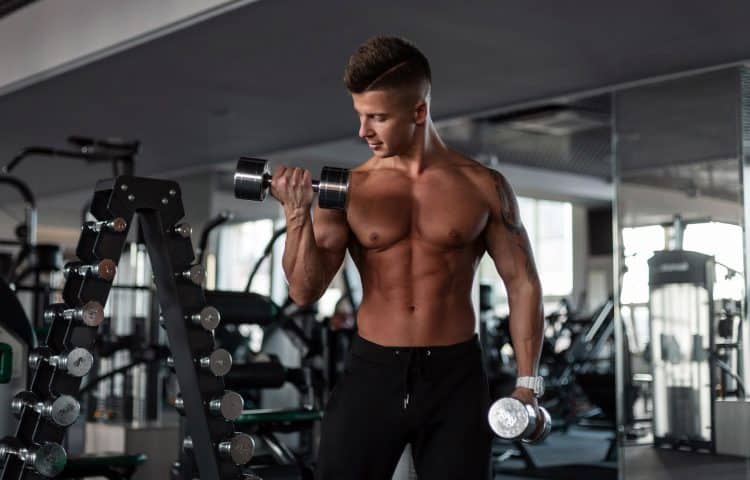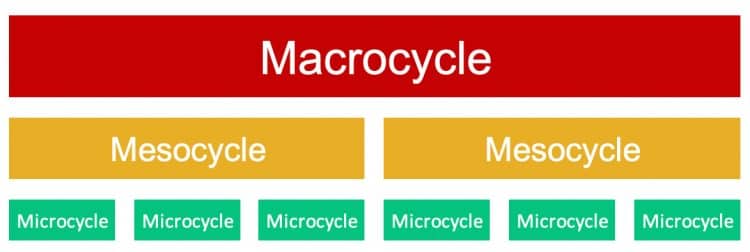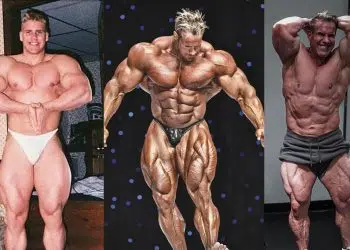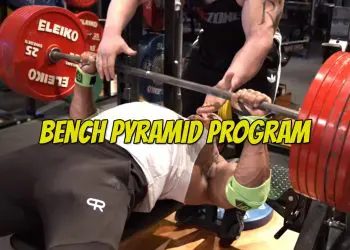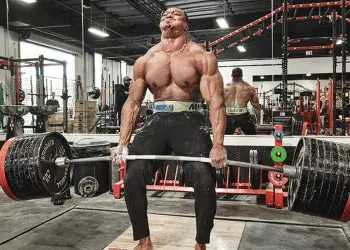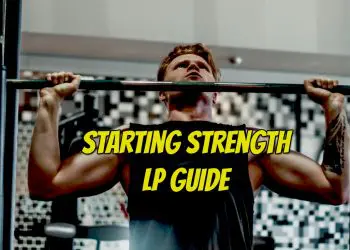Are you fed up with training hard but not making gains? I hear you! In this article, I delve into periodization, a proven method for maximizing your bodybuilding results and preventing plateaus.
One of the best pieces of training advice I’ve ever had is also one of the most Zen: “If you always do what you have always done, you’ll always get what you’ve always got.” I can’t remember which of my mentors said that to me. Regardless, it’s something I’ve gone on to share with all my personal training clients and certification students.
In simple terms, this expression explains why even the best training programs eventually stop working. Your body adapts to the demands of your workout. But, if the program stays the same, there is no reason for your body to continue changing.
So, if you want to change your physique, you must change your program.
Unfortunately, many exercisers mistake this to mean they should vary their workouts every time they hit the gym. Some call this “muscle confusion,” but, really, it’s just a waste of your time and energy. While doing the same workout for too long will impair your progress, so will varying your workouts each week.
Periodization involves the planned, strategic manipulation of your workout to create long-term progress. It gives you the variety you need to keep making gains but enough stability for you to wring every last gain from your current program.
Level Up Your Fitness: Join our 💪 strong community in Fitness Volt Newsletter. Get daily inspiration, expert-backed workouts, nutrition tips, the latest in strength sports, and the support you need to reach your goals. Subscribe for free!
In this article, I explain the basics of periodization and how to use this method to maximize your bodybuilding results.
Periodization Basics
Periodization describes a way of structuring your workouts for long-term progress. It breaks your training year down into blocks, each one building on what you did before. Periodization is commonly used in sports, especially when preparing for the next season or a big event. However, bodybuilders can also use it to avoid plateaus and maximize progress.
A periodized training plan involves the manipulation of the so-called training variables. But rather than randomly changing your workouts, adjustments are logical and progressive. The training variables include:
- Weight, typically expressed as a percentage of your one-repetition maximum
- Repetition range
- Volume, i.e., the number of sets per workout
- Rest periods between sets
- Exercise choices
- Training split
- Training frequency
Adjusting any of these variables will change the effect of your program. By making these changes gradual and progressive, you increase your chances of continual progress.
Example Periodized Training Plan
We’ll get into the nitty-gritty of periodization later in this article. That said, here’s an example of how you might use periodization over a 12-month period.
This example uses the linear model. However, there are other periodization methods that might be more appropriate to your needs and goals. You’ll find explanations of these variations in the next section.
January to March: Hypertrophy Phase
- Goal: Increase muscle size to provide a foundation for strength.
- Training: Bench press variations for 3-4 sets of 8-12 reps at 65-75% of 1RM.
April to June: Strength Phase
- Goal: Build raw strength in the newly developed muscle tissue.
- Training: Bench press for 4-5 sets of 4-6 reps at 75-85% of 1RM.
July to September: Power Phase
- Goal: Increase the explosive power of the chest, shoulders, and triceps.
- Training: Speed bench press for 3-5 sets of 2-3 reps at 50-60% of 1RM
October to November: Hypertrophy Phase 2
- Goal: Return to muscle building, capitalizing on recent strength increases.
- Training: Bench press variations for 3-4 sets of 8-12 reps at 65-75% of new 1RM.
December: Active Recovery Phase
- Goal: Allow the body to recover and repair while maintaining bench press technique.
- Training: Bench press for 2-3 sets of 8-10 reps at 50-60% of 1RM, focusing on form.
This periodization plan is cyclic. Therefore, at the end of the training year, you repeat the cycle using heavier loads as you’ll be stronger than the last run-through. Note that this is just one way to use periodization. It demonstrates just one way you can manipulate the training variables to maintain your progress.
Periodization Terminology
Periodized plans generally consist of several training phases called cycles. The length of the cycle determines its name. These are:
- Workout – a single training session
- Microcycle – one week of training.
- Mesocycle – a single training block, typically 4-8 weeks or microcycles.
- Macrocycle – several mesocycles performed in sequence, i.e., the training year.
So, a macrocycle comprises several training blocks called mesocycles, each consisting of shorter microcycles. Microcycles contain several workouts. As such, an entire year of training could end up looking something like this:
You can also sting several macrocycles together to work toward an even bigger goal, such as a biennial or two-year cycle or a quadrennial or four-year cycle. Olympic athletes often use quadrennial cycles, as the Olympic Games happen once every four years.
You now have the knowledge you need to delve a little deeper into different types of periodization and how to use them for bodybuilding. So, in the next section, I’ll explore the four main periodization methods.
Types of Periodization
There are four main types of periodization, all of which can be beneficial to bodybuilders. Known as periodization models, these are:
1. Linear Periodization
The linear model is the most basic form of periodization. Also known as traditional periodization, this is the model that most people are familiar with. With linear periodization, you gradually increase training intensity (weight) and decrease reps as you work toward a peak.
On completion, and after a short deload, you start back at the beginning of your program. However, because you’re stronger, you’ll be able to handle heavier loads.
So, for example:
- Weeks 1-4: 15-20 reps per set @ 60% 1RM (muscular endurance)
- 5-8: 8-12 reps per set @ 65-80% 1RM (hypertrophy)
- 9-12: 3-5 reps per set @ 85-95% 1RM (strength)
- 13-14: deload/active recovery
- Week 15: Start over
While this approach is relatively easy to implement and can be effective, it’s not without drawbacks. The main issue for bodybuilders is that you spend relatively little time training for your primary goal. The rest of the time, you’ll be training for endurance or strength.
That said, you can modify linear periodization to make it more hypertrophy-specific. This involves dedicating less time to endurance and strength and more to hypertrophy. For example:
- Weeks 1-3: 15-20 reps per set
- 4-10: 8-12 reps per set
- 11-12: 3-5 reps per set
- 13-14: deload/active recovery
- Week 15: Start over
Popular linear periodization programs include Starting Strength, Mad Cow 5×5, and Greyskull LP. Linear periodization is a useful method for beginners and anyone new to periodization.
Learn more on Linear vs Block Periodization.
2. Non-Linear or Undulating Periodization
Non-linear periodization involves varying your set and rep schemes frequently, often weekly, or even daily. Unlike linear periodization, non-linear periodization allows you to develop multiple fitness components simultaneously.
For example:
- 1st week: Muscular endurance emphasis (low reps, high reps, very short rests)
- 2nd week: Hypertrophy emphasis (medium reps, moderate weights, longer rests)
- 3rd week: Strength emphasis (low reps, heavy weights, very long rests)
Alternatively, you can vary your workout from day to day, which is called daily undulating periodization, or DUP.
For example:
- Monday: Upper body hypertrophy
- Tuesday: Lower body power and strength
- Thursday: Upper body power and strength
- Friday: Lower body hypertrophy
Non-linear periodization and DUP provide you with the variety you need to ward off plateaus and boredom. Additionally, it ensures that you spend enough time training toward your primary goal, i.e., hypertrophy. It’s a good option for long-term use, and ideal for intermediate bodybuilders and powerbuilders.
Learn more on Non-Linear Periodization.
3. Block Periodization
As the name suggests, block periodization breaks your macrocycle down into individual training blocks. Each block has a specific objective and can address any fitness component or goal. However, unlike linear periodization, where intensity increases, and volume decreases, volume and intensity are more goal-dependent.
Level Up Your Fitness: Join our 💪 strong community in Fitness Volt Newsletter. Get daily inspiration, expert-backed workouts, nutrition tips, the latest in strength sports, and the support you need to reach your goals. Subscribe for free!
Another interpretation of block periodization is pre-season, in-season, and post-season, as used by athletes. That said, traditional block periodization models use three types of training:
Accumulation: This training block features a high volume of moderate-intensity training with the goal of increasing muscle size. This block prepares you for the demands of the next by improving conditioning and training tolerance.
Transmutation: During this phase, intensity increases, and focus moves toward building strength. Volume may remain high or start to decrease according to the needs of the individual.
Realization: This phase sees intensity increase again and training volume decreases. The focus now is on maximal strength and power.
4. Conjugate Periodization
Conjugate periodization was popularized by powerlifting guru Louie Simmons, owner of Westside Barbell in Columbus, Ohio. Westside Barbell has produced more champion powerlifters than any other gym. Therefore, it’s safe to say their methods work. That said, Simmons only popularized and didn’t invent conjugate periodization, and it has its roots in the old USSR.
Unlike linear and block periodization, where you have one training focus at a time, conjugate periodization combines multiple methods of training. This develops various fitness components simultaneously. As such, it shares some similarities with non-linear periodization.
Conjugate periodization ensures that fitness characteristics developed during one phase of training aren’t lost when you move to the next. This is a common criticism of some linear periodized programs.
Conjugate Workout Types
Broadly speaking, conjugate periodization uses three types of training. These are:
Maximum Effort (ME): ME work is all about heavy weights and low reps. The aim is to develop your maximal strength. Typically, this type of training utilizes heavy weights and low reps, 85-92% of your 1RM for 1-5 reps.
Dynamic Effort (DE): DE training develops explosive power. The aim of DE training is to lift the weight as fast as possible. Loads are lighter, usually about 50-60% of your 1RM, but reps are low to avoid compromising speed, with 2-3 per set being the norm. However, the number of sets can reach ten or more while rests are limited to 30-60 seconds.
Repetition Effort (RE): RE training builds muscle. This is the type of training that most bodybuilders are familiar with. This type of training uses the standard set/rep framework for hypertrophy, i.e., 3-5 sets of 8-12 reps using 67-85% of your 1RM. RE training is often used in powerlifting to eliminate weakness and fix muscle imbalances.
These three methods are used in rotation to develop all muscular fitness components simultaneously. For example:
- Monday – ME Bench Press + RE for Chest and Triceps
- Tuesday – ME Squat/Deadlift + RE for Hamstrings and Low Back
- Thursday – DE Bench Press + RE for Deltoids and Triceps
- Friday – Dynamic Effort Squat/Deadlift + RE for Quadriceps and Core
- Saturday – RE Back & Biceps
The conjugate method is one of the most advanced periodization methods and is popular with competitive powerlifters. However, more experienced bodybuilders may also benefit by using it. That’s especially true if they need to get stronger to blast past a current plateau.
Please note that there are other lesser-known periodization models, but they’re mostly variations of those outlined above. They’re generally used by athletes and probably a little too specialized for bodybuilding.
How to Use Periodization for Bodybuilding
I’ve used periodization extensively with my personal training clients, as well as in my own workouts. It’s a great way to maintain progress and avoid plateaus. I use periodization to help me prepare for powerlifting meets. I’ve also used variations of periodization when I was a triathlete to peak for important races.
Accordingly, I can safely say that periodization works.
And it’s not just me and a few clients that have had positive results from periodization. In a meta-analysis published on PubMed, researchers found that linear and non-linear training models produce better strength gains than non-periodized programs (1).
But periodization is not just making you stronger. In another PubMed meta-analysis, researchers found that structured, progressive variations in training led to significant improvements in hypertrophy (2).
Yet another study from PubMed also found that periodized training is more effective than non-periodization for increasing muscular and cardiovascular performance (3).
So, the evidence supports periodization, and that’s hardly surprising given that this type of training has been around since the late 1960s/early 1970s. In fitness and sports, if something doesn’t work, it soon falls out of favor. The fact that, over 50 years later, elite athletes from all sports still use periodization strongly supports its validity.
But how should you use periodization for bodybuilding? Let’s discuss!
Periodization for Novice Bodybuilders
Periodization is often said to be an advanced training method. But that depends on which type you use and how you use it. I believe that periodization is ideal for novices and even rank beginners.
A lot of exercisers end up on programs that are too advanced for them. They may self-select these plans or get them from a trainer. Regardless, doing too much training too soon can be detrimental to long-term progress. It could even cause injuries.
A well-designed linear periodization program starts easy and increases in difficulty over several months. Simply put, it grows and develops with you. This is a much safer and more effective way to organize your workouts than diving into something like an advanced split routine.
For example, a year of periodized training for a novice bodybuilder could look something like this:
| Training Phase | Workout Characteristics | |
| January | Muscular endurance | Full-body, machine-based |
| February | Muscular endurance | Full-body, introduce freeweight |
| March | Hypertrophy 1 | Full-body, slightly higher training volume |
| April | Hypertrophy 1 | Maintain higher training volume |
| May | Hypertrophy 1 | Slightly increase training volume again |
| June | Hypertrophy 2 | Introduce basic split routine |
| July | Hypertrophy 2 | Continue basic split routine |
| August | Hypertrophy 2 | Continue basic split routine |
| September | Strength 1 | Shift focus to building basic strength |
| October | Strength 1 | Continue building basic strength |
| November | Hypertrophy 3 | Adopt a more challenging split routine |
| December | Hypertrophy 3 | Increase training volume/frequency |
On reaching the end of the year, it’s time for a short deload/period of active recovery before adopting a new periodization model.
Periodization for Intermediate Bodybuilders
Intermediate bodybuilders, i.e., those with a couple of years of training, can also benefit from periodization. Adopting a periodized plan will help you gain strength, allowing you to lift heavier weights and build more muscle. It’ll also help you steer clear of training ruts.
There are lots of ways for an intermediate to organize their training year, but here is an example of how you could do it:
| Training Phase | Workout Characteristics | |
| January | Hypertrophy 1 | Basic split, low volume |
| February | Hypertrophy 1 | Basic split, medium volume |
| March | Hypertrophy 1 | Basic split, higher volume |
| April | Strength 1 | Basic strength |
| May | Hypertrophy 2 | More intensive split, low volume |
| June | Hypertrophy 2 | More intensive split, medium volume |
| July | Hypertrophy 2 | More intensive split, high-volume |
| August | Strength 2 | Intermediate strength |
| September | Hypertrophy 3 | Advanced split, low volume |
| October | Hypertrophy 3 | Advanced split, medium volume |
| November | Hypertrophy 3 | Advanced split, high-volume |
| December | Strength 3 | Advanced strength |
Obviously, you can interpret things like basic split vs. advanced split, and low volume vs. high volume in different ways. However, this overview illustrates how training progresses over the course of a year, ensuring maximum progress.
Periodization for Advanced Bodybuilders
Advanced bodybuilders are the lifters most likely to benefit from periodization. That’s because years of training means they’ll be closer to their genetic potential. Therefore, they’re more likely to experience progress plateaus.
Non-linear periodization is ideal for more advanced lifters, as it provides lots of training novelty and a wide range of stimuli. Daily undulating periodization is especially effective for experienced lifters, as the stimulus changes from workout to workout. So, rather than change your workouts over the course of a year, they vary from day to day.
For example:
| Workout | |
| Monday | Legs – strength emphasis |
| Tuesday | Chest and back – hypertrophy emphasis |
| Wednesday | Rest |
| Thursday | Legs – hypertrophy emphasis |
| Friday | Chest and back – strength emphasis |
| Saturday | Rest |
| Sunday | Shoulders and arms – hypertrophy emphasis |
Training volume and intensity can be manipulated over the course of the year. For example:
| Training Phase | |
| January | Low volume/intensity |
| February | Medium volume/intensity |
| March | High volume/intensity |
| April | Active recovery |
| May | Low volume/intensity |
| June | Medium volume/intensity |
| July | High volume/intensity |
| August | Active recovery |
| September | Low volume/intensity |
| October | Medium volume/intensity |
| November | High volume/intensity |
| December | Active recovery |
Such an approach should ensure continued progress. It will also minimize the risk of overtraining. Each high-volume/high-intensity period is followed by a few weeks of active recovery. This will consolidate your gains and prepare you for the next, more demanding phase of training.
Closing Thoughts
There are numerous ways you can use periodization for bodybuilding. However, most periodization models involve gradually increasing training intensity and volume over time. This is a much more effective approach to bodybuilding than doing the same workouts over and over, which often leads to plateaus.
If you want to change your body, you must change your workouts from time to time. However, those changes should be gradual and logical; don’t become a program butterfly.
That said, designing a periodized plan is not always easy, and what looks good on paper can be too demanding in practice. That helps explain the appeal of pre-written periodized programs, such as The Cube Method, The Juggernaut Method, Greyskull LP, Starting Strength, and Wendler’s 5/3/1.
So, if you design a periodized plan, take care not to make it too demanding. Also, be ready to make adjustments based on your progress. Don’t stick with a program that’s too hard for you. That’s almost as bad as not having a plan at all!
References
- Harries SK, Lubans DR, Callister R. Systematic review and meta-analysis of linear and undulating periodized resistance training programs on muscular strength. J Strength Cond Res. 2015 Apr;29(4):1113-25. doi: 10.1519/JSC.0000000000000712. PMID: 25268290.
- Grgic J, Mikulic P, Podnar H, Pedisic Z. Effects of linear and daily undulating periodized resistance training programs on measures of muscle hypertrophy: a systematic review and meta-analysis. PeerJ. 2017 Aug 22;5:e3695. doi: 10.7717/peerj.3695. PMID: 28848690; PMCID: PMC5571788.
- Soares VL, Soares WF, Zanetti HR, Neves FF, Silva-Vergara ML, Mendes EL. Daily Undulating Periodization Is More Effective Than Nonperiodized Training on Maximal Strength, Aerobic Capacity, and TCD4+ Cell Count in People Living With HIV. J Strength Cond Res. 2022 Jun 1;36(6):1738-1748. doi: 10.1519/JSC.0000000000003675. Epub 2020 Jun 24. PMID: 32604148.

